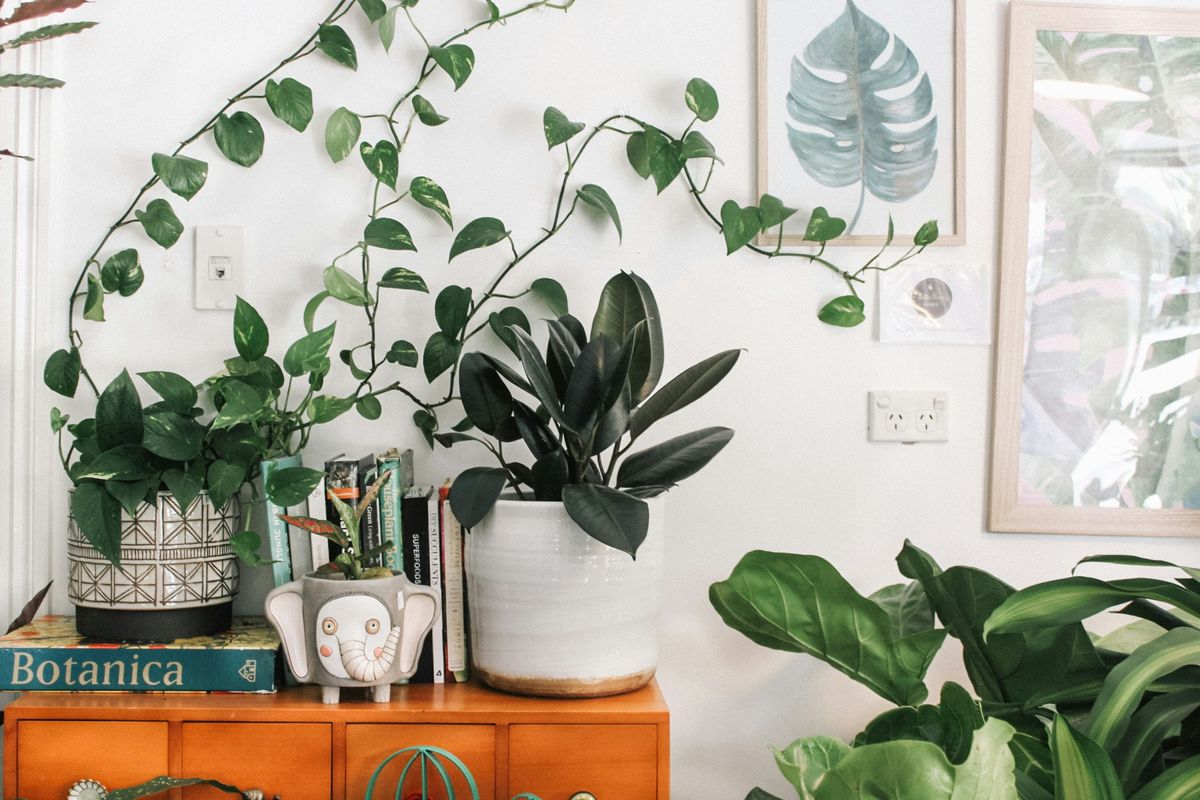Table of Contents
Assessing and Improving Your Green Living Habits

Conducting a Personal Eco-Audit
Embarking on the path to sustainability begins with a thorough personal eco-audit. This process involves taking a critical look at your daily habits and consumption patterns to identify areas where you can make more sustainable choices. Start by assessing your energy usage, waste production, and transportation methods.
- Evaluate your energy bills to understand your consumption patterns.
- Sort through your waste to see what you’re throwing away most often.
- Reflect on how often and why you use your car for transportation.
By pinpointing these aspects of your lifestyle, you can set realistic goals to reduce your environmental footprint.
Remember, small changes can lead to significant impacts. Whether it’s opting for a reusable water bottle, taking shorter showers, or carpooling, every action counts. Use the insights from your eco-audit to guide you in making incremental changes that contribute to a healthier planet.
Setting Sustainable Goals
Embarking on a journey towards a more sustainable lifestyle begins with setting clear and achievable goals. Start by identifying areas where you can make the most impact, such as reducing energy consumption or minimizing waste. It’s essential to establish specific objectives that are measurable and time-bound to ensure you can track your progress effectively.
- Reflect on your daily habits and pinpoint opportunities for improvement.
- Prioritize goals that align with your values and lifestyle.
- Break down larger goals into smaller, actionable steps.
By making conscious choices in our daily lives, we can create a more sustainable future for ourselves, our communities, and the planet.
Remember, sustainability is not a destination but a continuous process of learning and growth. Revisit and adjust your goals as needed to stay on the path of eco-friendly living. Embrace the principles outlined in the title ‘Eco Friendly: Fundamentals for Decoding Sustainable Choices’ to guide your journey.
Tracking Progress and Making Adjustments
Maintaining a sustainable lifestyle requires ongoing effort and the willingness to adapt. Tracking your eco-friendly actions is essential to understand the impact of your choices and to identify areas for improvement. Use a journal or digital app to log your daily habits, energy consumption, and waste production. This record-keeping will highlight your successes and pinpoint where you can make further changes.
Consistency is key in cultivating a sustainable lifestyle. However, life circumstances and new information can lead to necessary adjustments. Here’s a simple framework to help you stay on track:
- Review your eco-audit results monthly.
- Compare current practices with your sustainability goals.
- Adjust your habits and goals as needed to stay aligned with your green living aspirations.
Remember, the journey to sustainability is a marathon, not a sprint. Small, incremental changes can lead to significant environmental benefits over time.
Energy Conservation Strategies for the Home

Adopting Mindful Energy Consumption
Adopting mindful energy consumption is essential for a sustainable lifestyle. Conserve energy by turning off lights and electronics when not in use. Additionally, investing in energy-efficient appliances can lead to significant savings on utility bills while reducing your carbon footprint.
- Install energy-efficient light bulbs and appliances.
- Unplug electronics when they’re not being used.
- Utilize natural lighting and ventilation instead of relying solely on artificial sources.
By integrating these simple habits into your daily routine, you can make a substantial impact on both the environment and your finances.
Remember, every small action contributes to a larger change. Reducing energy consumption not only lowers bills but also helps combat climate change. Consider renewable energy sources like solar panels to further your commitment to eco-friendly living.
Investing in Energy-Efficient Appliances
Investing in energy-efficient appliances is a crucial step towards reducing your home’s energy consumption and environmental footprint. Selecting the right appliances can lead to significant savings on your energy bills and contribute to a more sustainable lifestyle.
When shopping for new appliances, look for the EnergyStar label, which indicates that the product meets strict energy efficiency guidelines set by the U.S. Environmental Protection Agency. For example, an EnergyStar-rated refrigerator uses at least 15% less energy than non-certified models.
Upgrading to energy-efficient appliances is an investment that pays off in the long run, both for your wallet and the planet.
Here’s a quick guide to some of the best appliance brands that have been recognized for their efficiency:
- Dishwashers: EnergyStar deemed the brand the “Most Efficient” in 2023.
- Refrigerators: Ranks among the top 10 in standard refrigerators.
- Freezers: Also listed in the top 10 for energy efficiency in freezers.
Leveraging Smart Home Technologies
In the quest for a sustainable lifestyle, leveraging smart home technologies is a game-changer. Smart thermostats, for instance, can learn your schedule and preferences, adjusting the heating and cooling of your home for optimal energy use. Similarly, smart lighting systems allow you to control lights remotely, ensuring that energy is not wasted on an empty room.
Smart plugs can turn any appliance into a smart device, providing you with the ability to monitor and manage energy consumption from your smartphone. This not only helps in reducing your carbon footprint but also in cutting down on electricity bills.
By integrating smart home technologies, you can significantly enhance the efficiency of your household’s energy consumption.
Here are some simple steps to get started:
- Install smart light bulbs that can be controlled via an app.
- Use smart power strips to manage multiple devices simultaneously.
- Upgrade to a smart thermostat for better heating and cooling management.
- Consider smart water heaters that learn your usage patterns and adjust accordingly.
Developing a Sustainable Diet

Choosing Locally Sourced and Organic Foods
Embracing the practice of selecting locally sourced and organic foods is a cornerstone of sustainable living. By choosing to buy from local farmers and markets, we not only reduce our carbon footprint by minimizing the transportation of food, but also ensure that we are consuming fresh, organic produce. This approach supports local economies and promotes a more resilient food system.
- BUY LOCAL, ORGANIC PRODUCE: When you can’t grow your own food, look for farmers markets or community-supported agriculture (CSA) programs in your area. Buying locally grown, organic produce not only supports your community but also reduces the carbon footprint of transportation and storage.
Emphasizing the importance of a sustainable diet, it’s crucial to recognize the environmental impact of our food choices. Opting for local and organic options is a significant step towards a healthier planet and a more sustainable lifestyle.
- REDUCE MEAT CONSUMPTION: Animal agriculture is a major contributor to greenhouse gas emissions and deforestation. Consider reducing your meat consumption, or switching to sustainably raised, grass-fed meat to further lessen your ecological footprint.
Reducing Food Waste Through Meal Planning
Meal planning is a cornerstone of sustainable living, helping to minimize food waste and save money. By planning your meals in advance, you can purchase only what you need, reducing the likelihood of food going unused and spoiling.
Meal planning also allows for more efficient grocery shopping, as you can create a list of required ingredients, which helps avoid impulse buys that may not be consumed. Here’s a simple guide to get started:
- Assess your pantry and fridge before shopping to avoid buying duplicates.
- Plan your meals around ingredients you already have.
- Make a shopping list based on your meal plan.
- Stick to your list when grocery shopping.
By incorporating leftovers into your meal planning, you can ensure that every bit of food serves a purpose, further reducing waste.
Remember, small steps can lead to significant changes in reducing your kitchen’s environmental impact. Embrace these practices and make them a part of your daily routine for a more sustainable lifestyle.
Incorporating Plant-Based Meals
Transitioning to a more sustainable, plant-based diet is a key strategy in reducing your carbon footprint and promoting environmental health. By focusing on plant-based ingredients, you not only benefit the planet but also enrich your diet with a diverse range of nutrients. Start by introducing one plant-based meal a week and gradually increase the frequency as you discover new recipes and flavors.
Embracing a plant-based lifestyle doesn’t mean sacrificing taste or variety. Explore the abundance of vegetables, grains, legumes, and fruits that can form the basis of hearty and delicious meals.
Here are some simple steps to get started:
- Identify plant-based recipes that appeal to your taste buds.
- Plan your meals around seasonal produce to ensure freshness and support local farmers.
- Experiment with plant-based alternatives to dairy and meat products.
- Share your favorite plant-based dishes with friends and family to inspire others.
Remember, every plant-based meal is a step towards a healthier you and a healthier planet.
Creating Eco-Friendly Spaces

Designing a Relaxing Green Space
Creating a greener, more sustainable home often begins with the spaces we inhabit daily. To start, choose houseplants that are well suited to your home’s lighting and temperature, such as sansevieria, bamboo palm, or fern. These plants not only enhance the aesthetic of your space but also contribute to cleaner air and a sense of tranquility.
A green and well-maintained outdoor space not only enhances the overall health and tranquility of your home but also invites local wildlife, creating a vibrant ecosystem right in your backyard.
Incorporating sustainable materials like bamboo and reclaimed wood can further align your outdoor space with eco-friendly practices. Here’s a simple guide to get you started:
- Select plants native to your region to support local ecosystems.
- Use organic soil and mulch to nourish your plants naturally.
- Install a water-efficient irrigation system to conserve water.
- Choose outdoor furniture made from sustainable or recycled materials.
Remember, a relaxing green space is not just about aesthetics; it’s about creating a sustainable environment that supports your well-being and the planet’s health.
Starting a Personal Garden
Embarking on the journey of creating a personal garden is a rewarding step towards a sustainable lifestyle. Start with a low-maintenance garden that can flourish with minimal intervention. Opt for native and drought-resistant plants, which are more likely to thrive in your local environment. This approach not only conserves water but also supports local biodiversity.
Incorporate perennials into your garden design to enjoy their benefits year after year. Perennials require less upkeep compared to annuals and contribute to a more sustainable garden ecosystem. Here’s a simple list to get you started:
- Choose location wisely: sunlight and soil quality matter
- Select native and perennial plants for sustainability
- Implement composting to enrich the soil
- Use natural pest control methods
By growing your own vegetables and herbs, you not only reduce your carbon footprint but also ensure a supply of fresh, organic produce. Even with limited space, container gardening or a small raised bed can yield bountiful results.
Implementing Eco-Friendly Decor
In the spirit of sustainable living, choosing decor that is both aesthetically pleasing and environmentally responsible is essential. Opt for sustainable materials like bamboo, reclaimed wood, or recycled items to minimize your ecological footprint. These materials are not only durable but also add a unique charm to your home.
Eco-friendly lighting solutions can significantly reduce your energy consumption. Consider replacing incandescent bulbs with LED options, which are more energy-efficient and have a longer lifespan. This simple switch can illuminate your home in a greener way.
When selecting products for your home, support companies that prioritize sustainability. Look for eco-labels such as Energy Star or FSC to ensure that your purchases align with eco-friendly practices.
Here are some sustainable decoration ideas to protect the environment:
- Use natural cleaning products to avoid harmful chemicals.
- Reduce plastic usage by choosing alternatives like glass or metal.
- Implement mindful energy consumption by turning off lights and electronics when not in use.
Embracing Sustainable Transportation and Consumption

Opting for Low-Impact Travel Options
Transportation is a major contributor to global carbon emissions. Choosing alternative modes of transportation such as walking, cycling, or using public transit can significantly reduce your environmental impact. For longer distances, consider carpooling or selecting fuel-efficient, electric, or hybrid vehicles.
Eco-friendly transportation in tourism means embracing sustainability. When traveling, minimize air travel and look for vacations closer to home or use video conferencing for business meetings. This not only supports local economies but also lessens your carbon footprint.
By prioritizing low-impact travel options, you contribute to a healthier planet and a more sustainable future.
Here are some practical steps to reduce your travel emissions:
- Walk or bike for short trips.
- Use public transportation whenever possible.
- Choose fuel-efficient vehicles for necessary car travel.
- Opt for staycations or nearby destinations to minimize air travel.
Supporting Ethical and Sustainable Brands
Choosing to support ethical and sustainable brands is a powerful way to promote positive change in the marketplace. Consumers have the power to drive demand for products that are made responsibly and sustainably. When shopping, look for certifications such as Fair Trade, USDA Organic, or the Forest Stewardship Council (FSC), which indicate a company’s commitment to ethical practices.
By prioritizing brands that value transparency, fair labor practices, and sustainable materials, we contribute to a more equitable and environmentally conscious economy.
Here are some steps to consider when supporting sustainable brands:
- Research the company’s sustainability claims and check for third-party certifications.
- Choose products made from recycled or renewable resources whenever possible.
- Consider the longevity and repairability of products to ensure a longer lifecycle.
- Engage with brands through social media or customer feedback to encourage their sustainable efforts.
Reducing, Reusing, and Recycling Effectively
The classic mantra of reduce, reuse, recycle remains a cornerstone of sustainable living. By reducing your consumption of single-use items like plastic bags and utensils, you’re taking a significant step towards a greener planet. Reuse items whenever possible to extend their life cycle and reduce waste. Recycling is essential for diverting materials such as paper, glass, and metal from landfills and promoting resource recovery.
Practice mindful consumption by evaluating the environmental impact of your purchases. Support second-hand and thrift stores to extend the lifespan of goods. Adopting a minimalist lifestyle can help reduce clutter and waste, fostering simplicity and contentment.
Transitioning to a zero-waste lifestyle involves avoiding disposable products and investing in reusable alternatives. Shop in bulk to reduce packaging waste and support businesses that prioritize sustainable practices.
Remember to donate unused clothing, electronics, and building materials to ensure others can reuse them. Buying products made with recycled content also contributes to a circular economy.
5 Tips and Techniques for Growing Eggplant: From Seed to Plate
Cultivating Zucchini: Tips for a Successful and Abundant Harvest
Mastering the Art of Growing Carrots: Tips for a Bountiful Harvest
10 Easy Sustainable Living Tips for a Greener Lifestyle — Sticky


